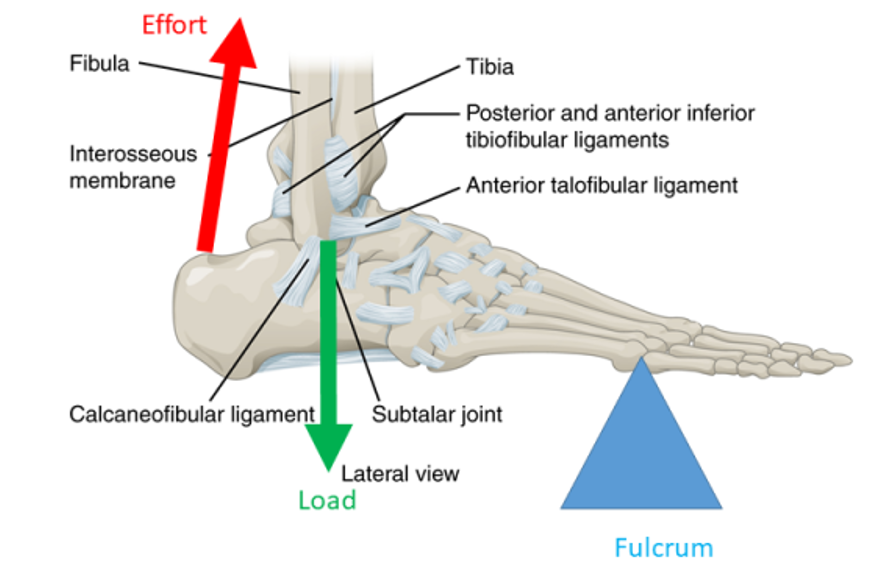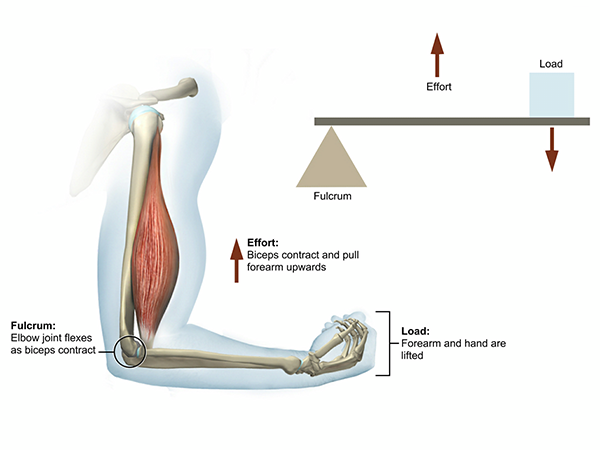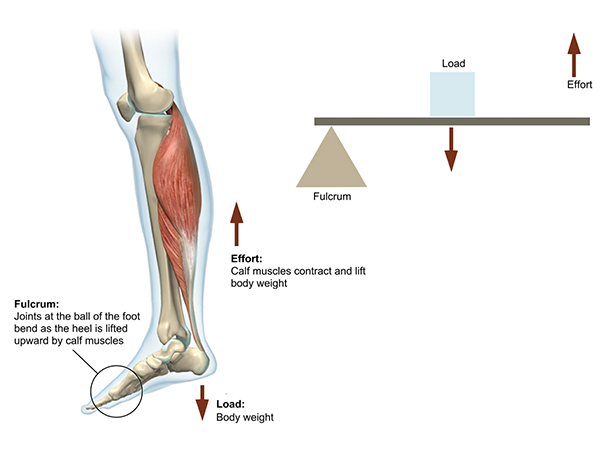Explain How Different Classes of Levers Affect Muscle Efficiency
When a group of muscle fibers is bundled as a unit within the whole muscle it is called a fascicle. Seesaws and scissors are first-class levers.

Body Levers Body Physics Motion To Metabolism
In a third-class lever the force is applied between the load and the pivot.

. An example of a third-class lever in the body is the biceps brachii which flexes the. There are three different kinds of levers. The types of levers.
In our daily life The first class levers are considered the most popular type of levers. A lever is a rigid rod able to rotate about a fixed point known as a fulcrum formed by the joint. Examples of first-class levers.
In first class levers the fulcrum is between the effort force and the resistance. This is the most basic type of lever. Who are the experts.
These levers are classified as first second and third-class based on the locations of their loads and fulcrums. Your skull is the lever arm and the neck muscles at the back of the skull provide the force effort to lift your head up against the weight of the head load. Any force applied to the lever is called the effort.
The pivot is the place where your skull meets the top of your spine. First-class leverage also occurs when you lift your. The efficiency of a lever relies on the ratio of the.
Explain how different classes of levers affect muscle efficiency. Examples include the orbicularis muscles surround the mouth and eyes. Fascicles are covered by a layer of connective tissue called perimysium see Figure 103.
Wheelbarrow - the resistance is in the center between the applied force and the fulcrum - a small force can move a large weight Figure 11-2c third-class lever. The general term used for these kinds of muscles is sphincter. Third class levers have the effort in the middle.
A lever is a system that allows muscles to move a load when they exert enough force by means of fulcrum. The action of a muscle pulling on a bone often works like a type of simple machine called a lever. The majority of muscles in the body are third-class levers and all act at a mechanical disadvantage as the force is applied closer to the pivot than the load.
The First class levers. First- and second-class levers generally are very efficient especially when the loads are located close to the fulcrum while efforts are further from the fulcrum Figures A and C. Start studying Chapter 10 Describe the arrangement of fasciles in the various types of muscles explain the resulting functional differences and explain how different classes and levers affect muscle efficiently.
Such a muscle is triangular or fan shaped like the pectoralis major muscle of the anterior. Mechanical Advantage is the efficiency of the lever system MAEARA 1st Class Lever fulcrum is located between the applied force and the load. Seesaw - the fulcrum is in the center between the applied force and the resistance - force and resistance are balanced Figure 11-2b second-class lever.
3rd Class Lever force is applied between the fulcrum and the load. The efficiency of first- and second-class levers will decrease when loads move further from the fulcrum Figures B and D. A first classlever is a lever system like that of the head and shoulders with the joint between the head and vertebrae working as the fulcrum with the fulcrum being in the center.
Using scissors represents the. A force that resists the motion of the lever such as the downward force exerted by a weight on. In a first-class lever the effort is applied at one end of the lever and the load is at the other with the fulcrum somewhere between.
Second class levers have resistance in the middle. Muscle efficiency relies heavily on muscle lever systems. First second and third in order of efficiency.
First top second middle and third bottom class levers and real-world examples of each. The pincer the pliers the paddle the scissors the seesaw the crowbar the hammer claw the. Learn vocabulary terms and more with.
Position Direction Fascicles arrangement Structural characteristics Action. Our hand pushing an object or seesaws crowbars. Class 1 lever nod your head.
Name the major muscles of the torso and provide a. A first-class lever a second-class lever a third-class lever All lever systems have the same efficiency. Describe the classes of levers and explain how they make muscles more efficient.
A convergent muscle has a broad origin and its fascicles converge toward a single tendon of insertion. First class second class and third class. Fascicle arrangement is correlated to the force generated by a muscle and affects the muscles range of motion.
Parallel fascicles have their long axes parallel to each other. Consider an individual who needs surgery to reattach his. See the chart below to visualize the difference between the levers.
Explain how the name of a muscle can help identify its location appearance or function. The neck muscles provide the effort the neck is the fulcrum and the weight of the head is the. First class lever This type of lever is found in the neck when raising your head to head a football.
Describe the arrangement of fascicles in the various types of muscles explain the resulting functional differences and explain how different classes of levers affect muscle efficiency. In the three lever examples on the previous page the second class lever provides the most mechanical advantage and this explains why it is so crucial. Its order is represented as force-fulcrum-weight.
Pearson Scott Foresman 5 Reinforcement Activity. This is a type of lever which has the fulcrum in between the weight and the force applied. Depending on the relative position of the three elements effort fulcrum and load a lever belongs to one of three classes.
When it contracts it shortens and gets larger in diameter. Describe the arrangement of fascicles in the various types of muscles explain the resulting functional differences and explain how different classes of levers affect muscle efficiency. First class levers have the fulcrum in the middle between the load and resistance.
Each of these lever classes have unique arrangements of the muscles insertion effort and bones leverarm around the joint fulcrum. Lever System Assessment Define lever system identify lever arms. Name the major muscles of the face and provide a function for each as they pertain to facial expression.
Classes of Levers. 2nd Class Lever load is situated between the fulcrum and the force. Explain how the name of a muscle can help identify its location appearance or.
Identify six different types of descriptive information that can be used to name skeletal muscles. They are broken into three classes. Experts are tested by Chegg as specialists in their subject area.
We review their content and use your feedback to keep the quality high.

Lever Systems In The Human Body Youtube

10 The Muscular System Ppt Download Muscular System Muscles Of Facial Expression Thoracic Cage


No comments for "Explain How Different Classes of Levers Affect Muscle Efficiency"
Post a Comment